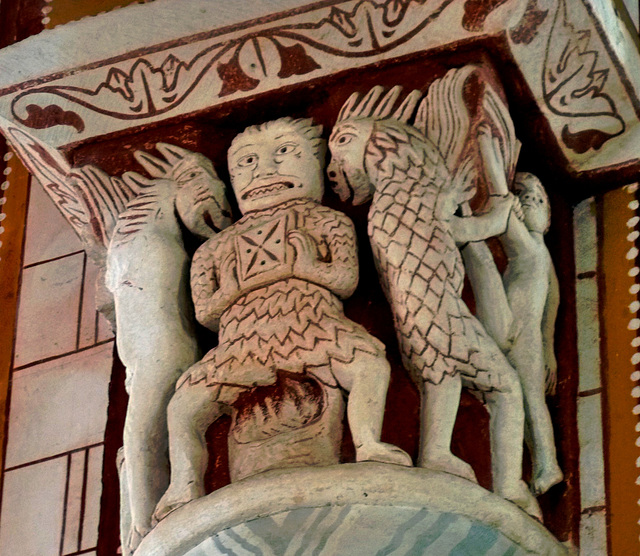Location
Lat, Lng: 46.570463, 0.648343
You can copy the above to your favourite mapping app.
Address: Collégiale Saint-Pierre De Chauvigny
You can copy the above to your favourite mapping app.
Address: Collégiale Saint-Pierre De Chauvigny
See also...
Keywords
Authorizations, license
-
Visible by: Everyone -
All rights reserved
-
231 visits
Chauvigny - Saint-Pierre


A small community of Canons in Chauvigny was founded by the Seigneurs de Chauvigny around 1025. Bishop Isembert I of Poitiers (+ 1047) was a Seigneur de Chauvigny, as well as his sucessor.
The erection of the Collegiate church started end of the 11th century. It took about a century to complete the structure. The church was in the center of the heavily fortified stronghold, that has a long history of sieges, lootings, captures and recaptures. The "Cité Médiéval" was in ruins end of the 18th century.
Mid 19th century the restauration process started. Since then the interior of Saint-Pierre has this distinctive colour-scheme of white and red. The church is known for the capitals, that are in deed extraordinary.
When I took the photo, I saw a miser, holding his purse, what is a common icon in medieval churches, but - that was wrong.
Meanwhile I have the impression, that the person in the center, holding a square object, is the Satan himself, dancing over the flames of hell.
He is flanked by two devils, who grab poor human souls - and through them into the inferno.
What could that square object be?
The erection of the Collegiate church started end of the 11th century. It took about a century to complete the structure. The church was in the center of the heavily fortified stronghold, that has a long history of sieges, lootings, captures and recaptures. The "Cité Médiéval" was in ruins end of the 18th century.
Mid 19th century the restauration process started. Since then the interior of Saint-Pierre has this distinctive colour-scheme of white and red. The church is known for the capitals, that are in deed extraordinary.
When I took the photo, I saw a miser, holding his purse, what is a common icon in medieval churches, but - that was wrong.
Meanwhile I have the impression, that the person in the center, holding a square object, is the Satan himself, dancing over the flames of hell.
He is flanked by two devils, who grab poor human souls - and through them into the inferno.
What could that square object be?
- Keyboard shortcuts:
Jump to top
RSS feed- Latest comments - Subscribe to the comment feeds of this photo
- ipernity © 2007-2025
- Help & Contact
|
Club news
|
About ipernity
|
History |
ipernity Club & Prices |
Guide of good conduct
Donate | Group guidelines | Privacy policy | Terms of use | Statutes | In memoria -
Facebook
Twitter











Sign-in to write a comment.